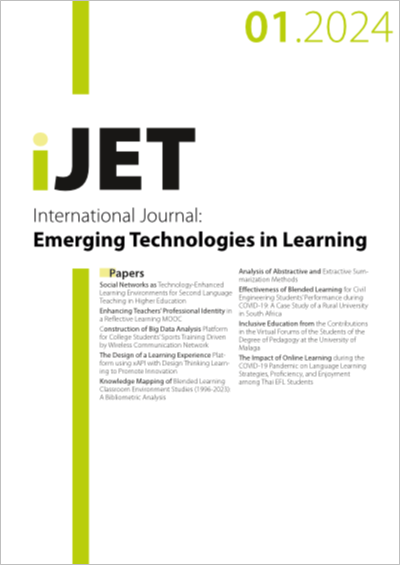Social Networks as Technology-Enhanced Learning Environments for Second Language Teaching in Higher Education
DOI:
https://doi.org/10.3991/ijet.v19i01.42013Keywords:
social networks, second language learning, second language learning environment, computer assisted language learningAbstract
In the post-pandemic era, the Digital 2023 Report highlights a rapid expansion in the global user base of social networking sites (SNSs). Despite the lack of formal integration of SNSs in second language (L2) education, which could enhance real-time creation, collaboration, and communication in the target language and culture, L2 learners still actively use these technologies outside of educational settings. This exploratory study utilizes a descriptive survey research design with a purposefully selected sample of 239 undergraduate and graduate students in their first and second years of language studies. These students pursue commonly taught languages, such as Spanish, as well as less commonly taught ones, such as Arabic, Persian, Slavic (Bosnian-Croatian-Serbian, Russian, and Polish), Turkic (Turkish and Uyghur), and Uralic (Estonian, Finnish, and Hungarian), in addition to others, such as Mongolian. The diverse range of languages enables a thorough investigation of the use of SNSs among college-level L2 learners in the United States, including both widely taught and less commonly taught languages. The findings of this study show that the target age group exhibits distinct preferences in their choice of social platforms for personal use compared to those used in L2 classrooms. Furthermore, the outcomes underscore the significant impact of age, gender, and the method of course delivery on the usage patterns of social networking sites.
Downloads
Published
How to Cite
Issue
Section
License
Copyright (c) 2023 Dr. Sibel Crum, Associate Professor Dr. Öner Özçelik

This work is licensed under a Creative Commons Attribution 4.0 International License.



